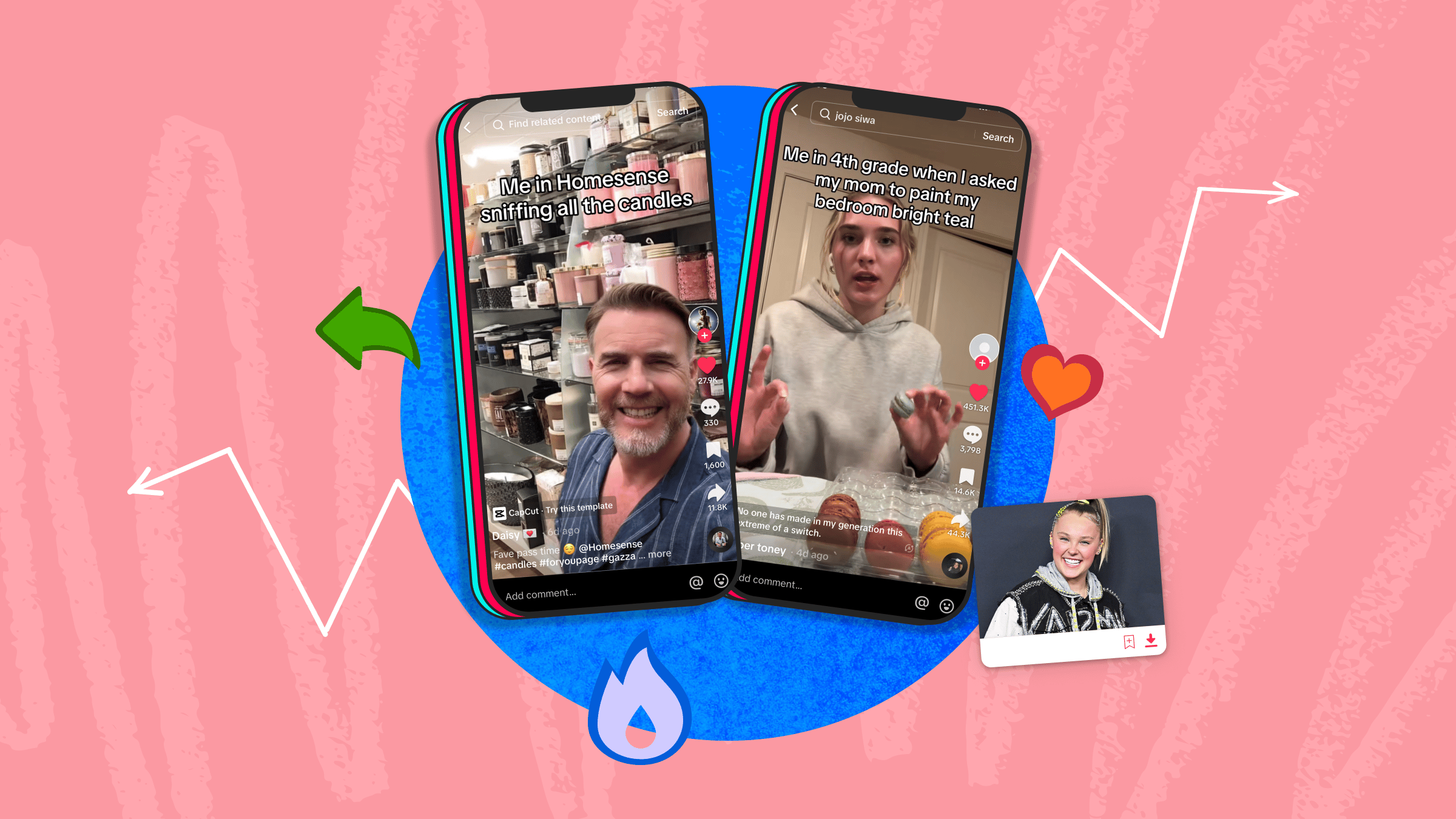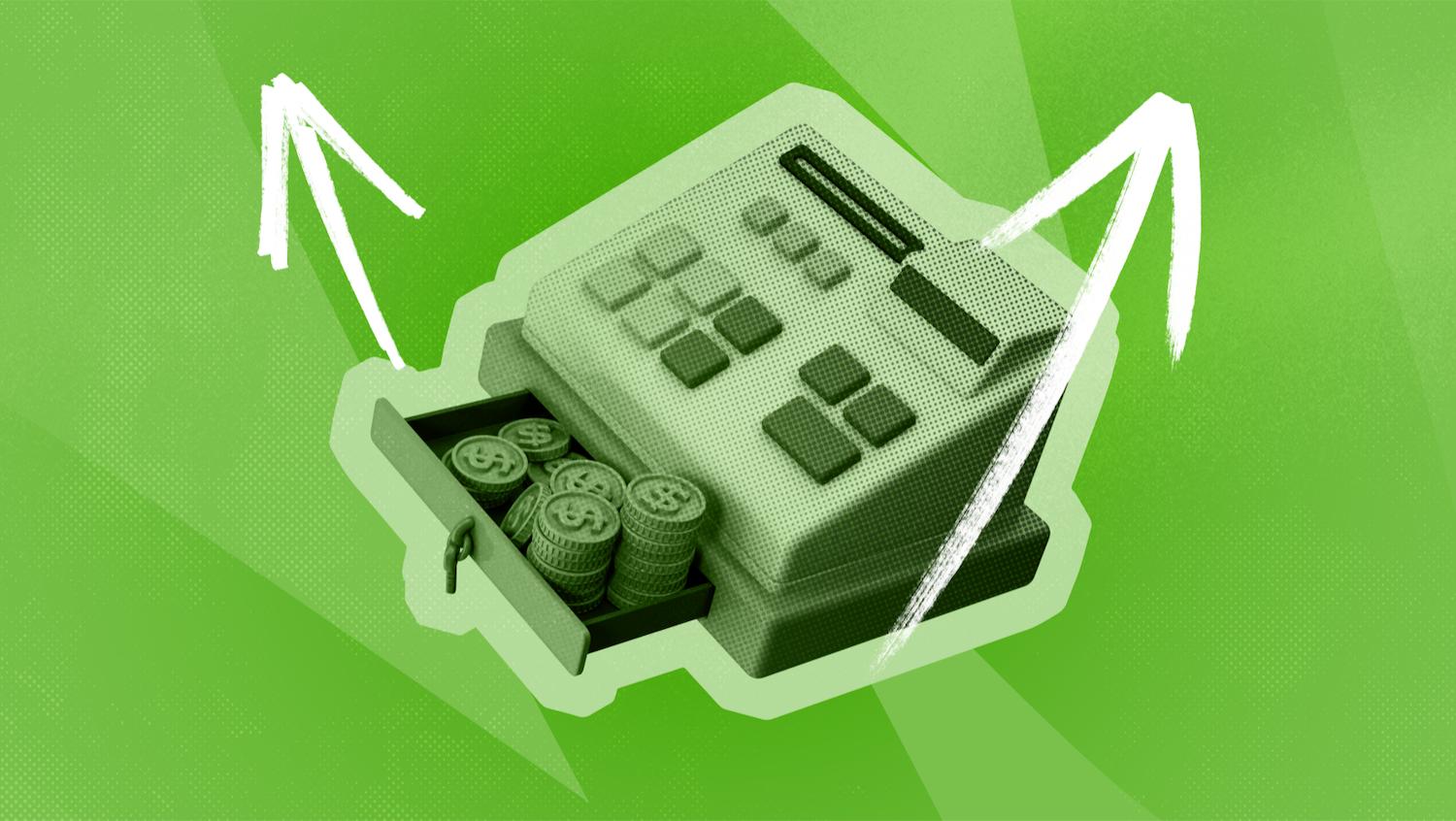Ready to transition from in-house to freelance graphic designer? Find out everything you need to know about going freelance in this guide.

The world of freelancing is growing – and fast. In fact, 84% of freelancers say that work lets them live the lifestyle they want, and 64% say their health has improved. It seems rather obvious what’s happening: people are beginning to choose themselves.
Our “rise and grind” culture – putting our blood, sweat, and tears into a 9 to 5 office job, so we can party hard on the weekend – is diminishing. People are beginning to see the negatives of this lifestyle, and choosing careers that work on their terms instead.
However, we know that’s easier said than done when you’ve been an in-house designer your whole life. So if you’re a graphic designer looking to make the big leap to freelance, here’s what you need to know and what we’ll cover:
What’s the Difference Between In-house and Freelance?
There are many differences between being an in-house designer and a freelance designer, but there are a few main adjustments that you’ll need to make.
1. Projects
In-House
With in-house projects, you only have so much freedom. Work is assigned based on company targets and campaigns, rather than whether it suits you or not. When you’re in-house, you’re the company’s designer, not your own. Projects also tend to be more fast-paced and marketing-driven, so you may get less time for creativity.
On the flip side, if you’re working in an in-house team, you’re likely to receive more feedback and direct peer reviews. So, if you’re brand new to graphic design, working in-house is a great option to improve development.
Freelance
As a freelancer, you get to choose your own projects, on your own time.
In the beginning, you may not have the freedom to be as discerning as you’d like to be about the clients and projects you take on. But over time once you’ve built your confidence and your network you should be able to say no to projects that don’t align with your interests and values or harness your skills. Ultimately, this means you’ll be more proactive with your time, allowing you to finish tasks quicker, and with much more enjoyment.
2. Ownership
In-house
While you may be the one creating the assets, making the tweaks, or formulating strategies – if you’re working for someone else, your work becomes theirs.
There’s strength to working in teams, of course, in that you have a support system when the going gets tough. Projects aren’t always easy – especially as a creative – so working with other people can be incredibly valuable. However, with joint ideas comes joint responsibility and ownership. That amazing idea you had for a banner graphic? Sure, you’ll get some kudos within the company – but from an outside perspective, that’s the company getting the pat on the back, not you.
Freelance
Freelancing, on the other hand, is a whole different story.
You can (and should) put your name to each and everything you create – whether it’s good or bad. Why? Because taking ownership of your work is what creates brand awareness and draws in those clients. In a sea of self-employed designers, you want your work to be searchable and distinguishable. Make yourself easy to find for those who want to hire you!
Thanks to the internet, it only takes one photo, video, or article to go viral nowadays. Life-changing opportunities happen each and every day with the use of social media, so if you want to be in with a chance of being the next big thing, make sure to put your brand on everything you do.
3. Schedule
In-house
While we’ve touched on flexibility briefly, it deserves its own section. As a designer, your schedule is incredibly important.
However, your day-to-day tasks may be something you don’t really pay attention to with an in-house role. The times that you clock-in and clock-out are so ingrained that it’s hard to imagine a world with the freedom to change all of that.
A common benefit of a stricter schedule is routine – some people like knowing exactly what they’re going to do and when they’re going to do it. Others also like that their schedule is out of their hands, as they feel better focusing on their creative outlet. Whatever your habits – good or bad – make sure you have them figured out before making the leap from in-house to freelance.
Freelance
When you go freelance, you’re your own boss. It’s one thing picking your own projects and prioritizing your skillset, but now you have to think about time.
Being a freelancer involves taking your time management skills to a whole new level. As you’ll be working to client deadlines, you’ll have some kind of end-goal, but how you get there is really up to you.
Some freelancers like to allow plenty of time to work slowly and deliberately – others prefer short, quick bursts of creative energy. Some freelancers choose to adopt a similar work style to an in-house role, starting at 9am and finishing at 6pm – while others may prefer to work through the evenings, and have a fluctuating workload.
Here’s the important thing to remember: with freelancing, there’s no right or wrong schedule. It’s totally based on what works for you!
4. Perks
In-house
There are a variety of perks that can come with an in-house role, with some common ones being:
- Financial security and superannuation/pension/retirement plan
- Loaned equipment, i.e. office equipment such as computers, tablets, and keyboards.
- Bonuses and discounts
- Structure and a motivating workplace culture
Ultimately, these perks are designed to improve employee morale and wellbeing, to keep employees satisfied within the company. Often, these perks have some monetary value, so using them can be a way of saving money alongside the consistent income of an in-house role.
Freelance
On the flip side, there are no official perks as a freelancer – unless you make them.
You won’t be gifted a brand new computer or a free meal at the coolest Mexican restaurant in town for simply working. But, you’re also not having to wait for a promotion, or being tasked with projects you’d prefer not to work on.
The perks here are in the form of a totally flexible schedule, free reign over your workspace, and unlimited growth potential – you’re the boss after all!
Plus, as a freelancer, you can still work as a contractor or in partnership with a company. Once you’ve grown your brand, there will be plenty of opportunities offered to you. Trips away, free products, free services – these are just a handful of examples that being self-employed in a partnership can grant you. Brands everywhere are looking to make substantial collaborations with talented people – maybe the next person in line is you.
5. Income
In-house
The topic of income often has the most impact when it comes to making the leap to freelance graphic design. Truth be told, an in-house income is a lot more stable and consistent than a freelancing gig. If you’re working in the US, the average salary for a graphic designer is around $51,845 per year. However, there’s still variation.
For instance, is your in-house team an agency? A start-up? Or is it a large corporate giant? Depending on each of their financial positions, they will offer different things. The salary will be plain and clear to see on your contract, so there’s no confusion – you know what you’ll be walking away with each and every month. Often, this is why people choose to take this path – having a sense of security within their payroll.
Along with a consistent income, you also have the advantages of holiday pay, sick pay, and any additional health insurance plans the company may have set up.
Freelance
So, is going freelance all doom and gloom on the financial side? Well, not exactly.
Before deciding on anything, make sure you’re fully aware of the average going rates for other designers within your niche, experience, and skillset. Also, test out the waters for what clients are willing to pay, as well as what types of clients you’re going to be working with on the majority of your projects. Will you be expecting to be paid per project, or per hour? Are you more likely to work on shorter briefs or long-term positions? Knowing all of this before accepting any project that comes your way is the best way of ensuring you won’t be taken advantage of.
Although a lot of people choose to go freelance for the freedom of lifestyle it allows – rather than the monetary aspect – the rewards are certainly a bonus. Getting to choose which projects you work on, as well as negotiating your own price, may mean you’re make more money than you were making from your last in-house role.
For a breakdown of some common freelance rates – from beginners to professionals – check out this article on how much hiring a freelancer costs.
6. Team
In-house
When working for a design team, you will have the opportunity to check in with others. You aren’t alone struggling with creative blocks, and you can bounce ideas off of your colleagues to make sure the project runs smoothly. Everyone will have different skill sets and their own remit, so you shouldn’t be stepping on each other’s toes.
Basically, it doesn’t all end with you.
This can be a good thing, especially given the example mentioned above, where you may feel lost or too creatively drained when working.
However, there’s also the saying that too many chefs can spoil the soup, or in this case, too many graphic designers can complicate a project. In this circumstance, you have to ensure that not only does everyone feel heard, but that their contributions are valid to the project.
Freelance
As a freelancer, you are everything. The buck stops with you. You’re acting as the accountant, the social media consultant, the SEO expert, the project manager – all in one.
At first, there may be a lot of trial-and-error, and that’s okay! Running your own business isn’t something you master overnight, and there are a lot of extra skills that will benefit you in the long run. Plus, the job satisfaction of knowing it all came from you and you alone is a great boost to your wellbeing.
So, you’ve weighed up the pros and cons, and have decided the life of a self-employed graphic designer is just what you need. Ready to take the leap? Here’s how to transition from an in-house designer to a freelance graphic designer…
How to Prepare for Going Freelance
1. Work on Your Portfolio






























As a freelance graphic designer, a great portfolio is a must. It’s your first impression, and for your client, it could be the difference between hiring you or not. But what sorts of things are crucial for a great graphic design portfolio?
1. Tailor it for the Client
Before sending a client your portfolio, make sure it’s tailored for them. Feature the most relevant examples of work upfront, followed by your strongest pieces. You’ll find that some pieces of work won’t be necessary to show to every potential client, and if this is the case, remove them! You don’t want to fatigue your viewer.
2. Display it Uniquely
The truth is, your client is probably scanning through tons of portfolios before they find the right one. Unfortunately, a lot of portfolios mean a lot of opportunities to dismiss your work to the back of the pile. So, make it stand out. Find interesting ways of presenting your work, and don’t be afraid to combine themes. Use a variety of mock-ups to demonstrate the practicality of your designs. Do whatever it takes to make sure that once the client looks at your portfolio, they can’t look away.
3. Emphasize Your Specialty
Every graphic designer will have their own niche and favorite projects to work on. Highlight your strengths and emphasize your specialty by featuring relevant projects front and center.
Also, ensuring you’re keeping all three elements of your trifecta – your website, portfolio, and social media accounts – up to date will leave clients confident that you’re committed to your craft.
2. Build Your Online Network












Having a strong network is another important aspect of scoring freelance graphic design jobs. It’s not just your services that need to be advertised well, but also your people skills. As a freelancer, you are the face of your business. So, it’s in your best interests to be professional and easy to deal with.
Here are three ways to build your freelance graphic design network…
1. Join a Creative Community
It can be extremely beneficial to create or join a community of creative freelancers in the same position as you. With over 430,000+ freelancers, Twine helps the self-employed secure exciting projects with clients. No matter your skill level, there’s a project out there waiting for your pitch. Oh, and did we mention it’s all free?
2. Generate Testimonials and Reviews
It’s one thing to be great with clients – but where’s the proof? You want people to have faith in you from the get-go. If a client sees one, or two, or ten, 5 star reviews, they’re more likely to trust you with their project. The sooner you get the ball rolling on acquiring testimonials, the better your business results will be.
3. Make Friends with Competition
Ever heard the saying, ‘keep your friends close, and your enemies closer?’ Well, knowing your competition in the freelance business is key to staying ahead of the curve. You may think it’s a wise idea to distance yourself from anyone doing the same thing as you, but in reality, it’s a better idea to keep an eye on them. What are they doing successfully, that you aren’t? What does your service deliver that theirs doesn’t? Just because they’re your competitors, doesn’t mean you can’t keep things friendly. You may find that their insights are valuable to your business.
3. Determine Your USP (Unique Selling Point)
















Before you start pitching yourself to clients, you need to figure out what it is you’re pitching.
This is where it’s handy to have up-to-date knowledge of your competitors, so you can establish what separates you from them. More than just your brand, what’s your unique selling point? Why should a client choose you over someone else?
To determine your USP, start by listing out the benefits your products and services offer. Follow that up with the elements of your products and services that can’t be imitated by the competition. Finally, address the client’s pain points: what’s in it for them?
After answering all of those questions, you should have a better idea of what your brand truly offers.
4. Keep Learning & Upskilling
There’s no better time to upskill than when you’re going freelance. As your own manager, you should dedicate this time to providing yourself with the right training and resources to push you to the next level in your career.
Want to specialize in web design, but have no idea how HTML works? Now’s the opportunity to get your foot in the door. There are many valuable courses you can find online so you’re not left behind.
Many freelancers are also turning to YouTube to share their knowledge, so you’re sure to find a quick tutorial for whatever your heart desires. Investing time in yourself is crucial for a great start in freelancing – further down the line, you’ll be thankful that you did.
5. Create a Business Plan
































Finally, don’t go into your freelance graphic career without a plan. If you don’t want to fall into a world of panic, make sure you’re prepared for any and all eventualities.
For a start, having savings under your belt is a good idea when making a career change like this one. Although freelancing is incredibly liberating and inspiring for a lot of people, it can also be unforgiving for the unprepared. As a rule of thumb, having 4x your monthly income in your back pocket (for rainy days, and dry spells) is encouraged.
You should also have a plan for the good times, as well as the bad. Sometimes, we can get overwhelmed when things are just going too well, as we aren’t prepared for the rush of success. In order to combat this, have a plan of action. Let clients know if you’re dealing with too much work, and need to hold off on accepting new projects. Refer to your budget, and ensure you have enough money to warrant any over-spending.
To Wrap Up…
The main takeaway from all of this is to weigh up the pros and cons of both in-house and freelance and decide which works best for you. Freelancing isn’t for everybody, so just because it complements somebody else’s life, doesn’t mean it’ll have the same effect on yours.
Similarly, a lot of designers wish to make the leap into freelancing and are fearful of things going wrong. It may be scary and unfamiliar for a little while, but the majority of freelancers are happy with their decision to switch from in-house to self-employed. The current economy for freelance graphic designers is booming, and will only continue to grow – maybe it’s time for you to become a part of the roaring success? Happy freelancing!
Guest Author: Tannah Cantrell
Originally a freelance painter and writer, Tannah Cantrell is now a Digital Marketer at Twine – an online freelance marketplace. A true creative at heart, she spends most of her time browsing the internet and researching the latest design trends.





















